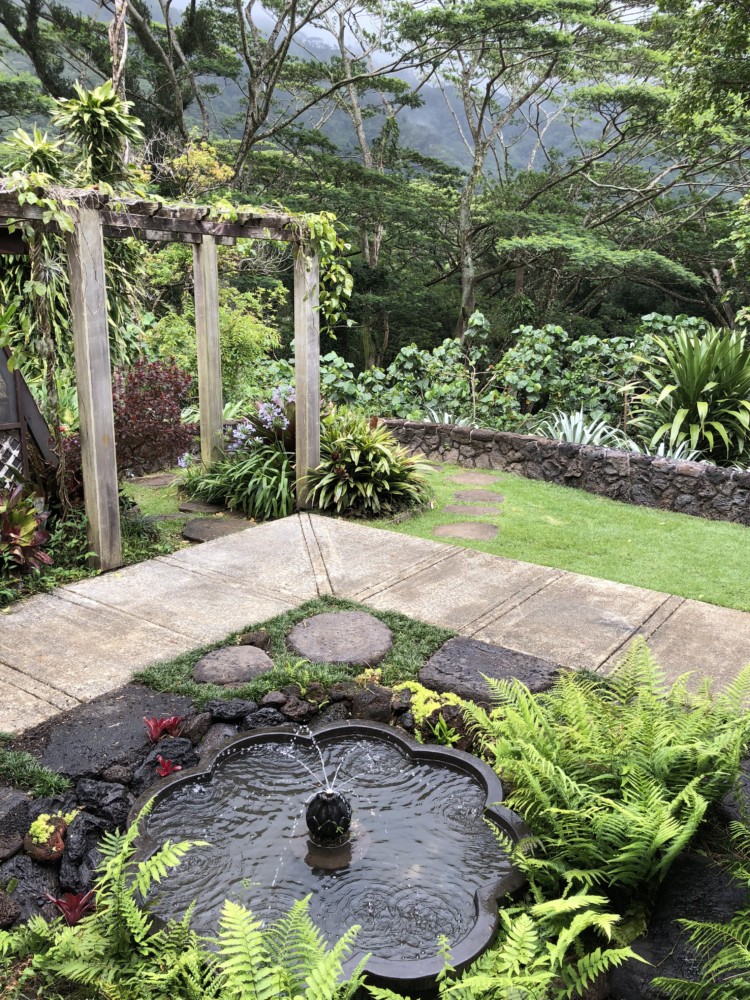Lyon at 100
By Stephen Haus
As Lyon Arboretum celebrates their 100th anniversary* this year, it is appropriate to remember the founding father, a matriarch, and those who have contributed to this vast collection of over 5000 species of plants from around the world, spread over 194 acres.
The founding father, Dr. Harold Lyon, arrived in Hawaii in 1907 from the University of Minnesota where he was a professor of Botany. He was recruited by the Hawaii Sugar Planters Association (HSPA) first serving as a plant pathologist and then in 1918 was sent by the HSPA Department of Botany and Forestry on an around the world plant collecting trip.
The replanting of a Hawaii devastated by the free reign of cattle and mountains pockmarked by the harvesting of Sandalwood, Koa and Ohia Lehua began as a watershed restoration project in the back of Manoa Valley. Hawaii was transitioning from a kapu system of harvest restrictions to a market economy where the land itself was the commodity. The Ficus species, a non-lumber tree, was Lyon’s most prolific introduction. The dominant canopy tree at Lyon, the Albizia, was actually introduced prior to Lyon by the Austrian Botanist Dr.Joseph Rock. From 1936-48 the Arboretum was the HSPA Experimental Station for testing re-vegetation schemes. In a letter to H.G. Agee, the Director of the Experimental Station, Lyon wrote, “continued neglect of these watersheds is suicide, for everything fails with the failure of the water supply”.
In 1956, Dr. Lyon wrote an article titled Honolulu Can Have A Botanical Garden. “Here there is a golden opportunity to build in upper Manoa Valley a vast botanical garden of native and introduced plants and at the same time carry through a project in water conservation that would prove of immense value to Honolulu.”
When Dr. Lyon died in 1957, he left funds in his estate for the Arboretum. The University of Hawaii Board of Regents then renamed Manoa Arboretum the Harold L. Lyon Arboretum. In his will he wrote “scatter my ashes in Manoa Arboretum in the land of Haukulu [dripping dew]“.
Another pioneer of horticulture in Hawaii was May Moir. May’s husband Goodale was the Chairman of HSPA, and their extensive travels together introduced tropicals from around the world to the islands. The “Rainbow” Plumeria was one of May’s introductions, smuggled in from a trip to Brazil.
May was best known as the floral artist at The Honolulu Academy of Arts for almost 50 years. She was the godmother of many Hawaii gardeners, including me. Beginning in 1982, I taught courses at Lyon Arboretum on “The Art of Landscape Design” and “Gardens of The World”. May was often in the audience and after an invitation to “Lipolani” her enchanted garden in Nuuanu, she became my mentor.
All new members of The Garden Club passed through the gate of Lipolani. Her floral sculptures at The Honolulu Academy of Arts, now the Honolulu Museum of Art, were sourced at Lyon and her own garden and installed with the help of the Garden Club. May elevated floral arrangement to a fine art. Her meticulous observation of nature in her books including “The Garden Watcher”, a month to month biography of her garden, included references to the Hawaiian Moon calendar noting auspicious planting days. All royalties from her books were donated to the Arboretum. Perhaps the greatest landscape architect of the last century, the Brazilian Roberto “Burle” Marx, called Lipolani “miraculous”.

View from the Garden of Remembrance at Lyon Arboretum. Photo credit: Stephen Haus
Ray Baker, the much beloved curator of the plant collection of Lyon for 38 years (1973-2011), was instrumental in making the Arboretum a premier palm collection in the Americas. He personally collected 34 species of palm from South America. Ray’s blood, sweat and tears laid out the network of paths that knit the Arboretum together. Ray served on the Boards of The International Palm Society and The Heliconia Society International and many of the gingers, heliconias and palms in private gardens throughout Hawaii were first introduced by Ray at Lyon.
In the words of Ray Baker’s wife Joyce, “His spirit lives on in all the plantings, all the rocks and streams, in the very air of his beloved Arboretum.”
Ray Baker and May Moir, along with members of the greater Arboretum community, are honored in the recently completed Garden of Remembrance at Lyon Arboretum.
Stephen Haus ASLA lived at Cottage C at Lyon Arboretum from 1983-1992. He designed the gardens that encircle the Visitor Center, The Okimoto-Mapes Garden (with Greg Boyer), The Young Garden and The Garden of Remembrance.
*Lyon Arboretum received an Anniversary Recognition in honor of their centennial at the 2018 Preservation Honor Awards on May 23, 2018 in Honolulu.

Photo credit: Lyon Arboretum


